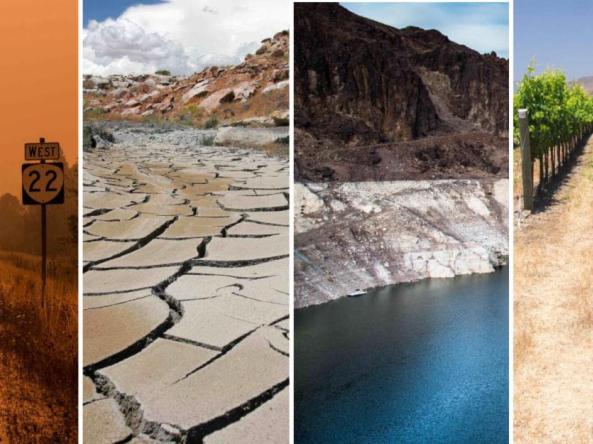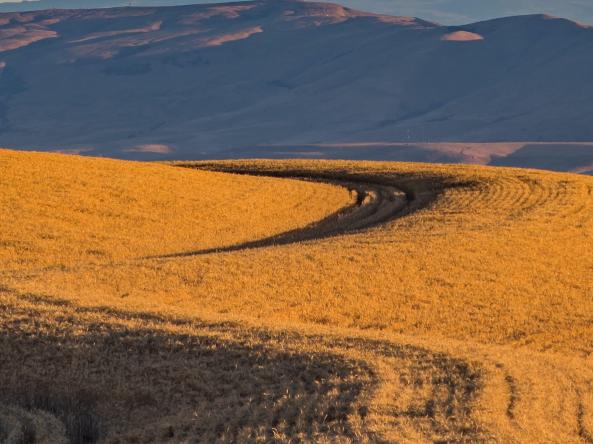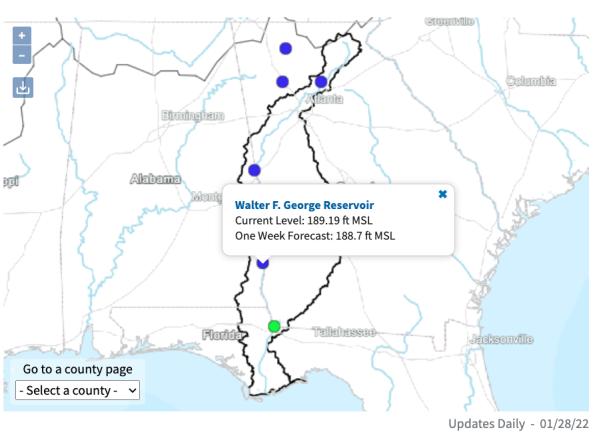The Southern Plains has been in extreme to exceptional drought since September 2021. This drought has been dynamic, changing almost month to month through the winter and spring. Intense heat and the rapid intensification of drought conditions through June and July made this webinar ever more timely.
These webinars provide the region's stakeholders and interested parties with timely information on current and developing drought conditions, as well as climatic events like El Niño and La Niña. Speakers will also discuss the impacts of these conditions on things such as wildfires, floods, disruption to water supply and ecosystems, as well as impacts to affected industries like agriculture, tourism, and public health.
Note: A glitch in the recording appears later in the video that caused the audio and visuals to be out of sync. We apologize for this issue.
According to the April 19, 2022 U.S. Drought Monitor, 70.2% of the Pacific Northwest Drought Early Warning System (DEWS) is in drought, with 22.4% of the region in Extreme/Exceptional Drought (D3/D4). While water availability in some areas of Washington and Idaho has improved over the winter months, much of southern and eastern Oregon and portions of Idaho recorded their driest 3-month January-March on record.
This two-day, in-person training will help arm up to 50 Tribal-serving professionals* with the knowledge and skills needed to get to the heart of the unique climate and health vulnerabilities of the Tribes they serve, while also offering space for participants to attend to their own hearts through personal reflection and peer connection. The interactive training format will feature expert speakers, facilitated discussions, and hands-on learning activities to help deepen understanding of the effects of climate change on Tribal health and wellbeing. The summit will help practitioners ready their hearts and minds to develop well-informed vulnerability assessments that best reflect their community’s concerns, culture, and aspirations and lead to the most meaningful adaptation decisions.
NASA DEVELOP is a nationwide program that allows early-career scientists and university students work on projects that utilize NASA Earth observations, addressing diverse environmental issues impacting communities. In this closeout presentation, learn how the Spring 2022 NASA DEVELOP teams from the NASA Langley Research Center in Virginia and from NOAA's National Centers for Environmental Information (NCEI) in North Carolina used NASA Earth observations for societal benefit.
The Pacific Northwest Drought Early Warning System Drought & Climate Outlook Webinar is part of a series of regular drought and climate outlook webinars designed to provide stakeholders and other interested parties in the region with timely information on current drought status and impacts, as well as a preview of current and developing climatic events (i.e., El Niño and La Niña).
The Upper Missouri River Basin Drought and Human Health Workshop was held on April 12–13, 2022 at Montana State University in Bozeman, Montana. The workshop was tailored around regional drought-related human health impacts, and helped identify gaps and needs, collaborative opportunities, and ways to integrate the health sector into existing drought activities.The National Integrated Drought Information System co-hosted this workshop with the University of Nebraska Medical Center, along with a number of Upper Missouri River Basin partner organizations.
The Pacific Northwest Drought Early Warning System Drought & Climate Outlook Webinar is part of a series of regular drought and climate outlook webinars designed to provide stakeholders and other interested parties in the region with timely information on current drought status and impacts, as well as a preview of current and developing climatic events (i.e., El Niño and La Niña).




